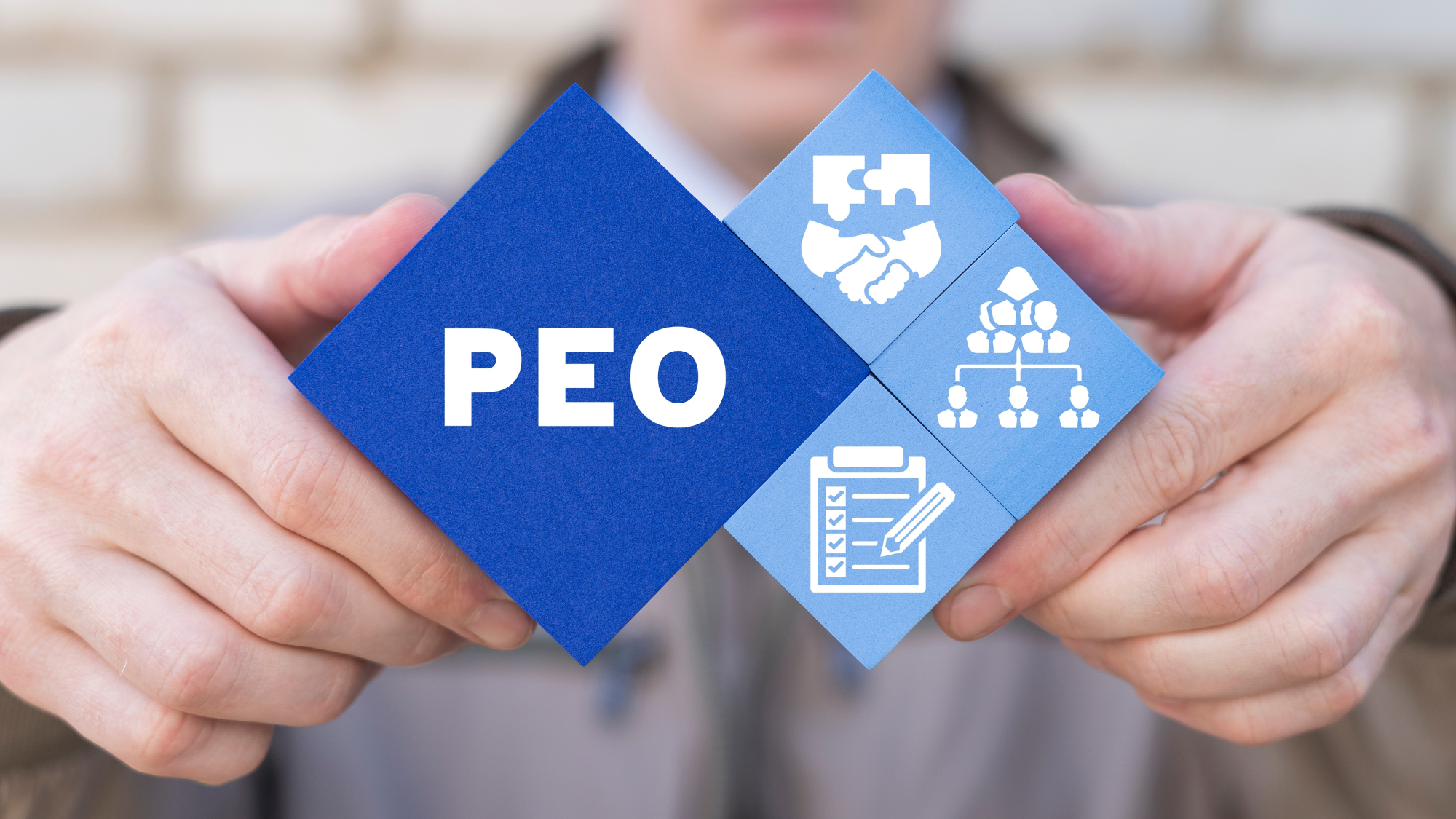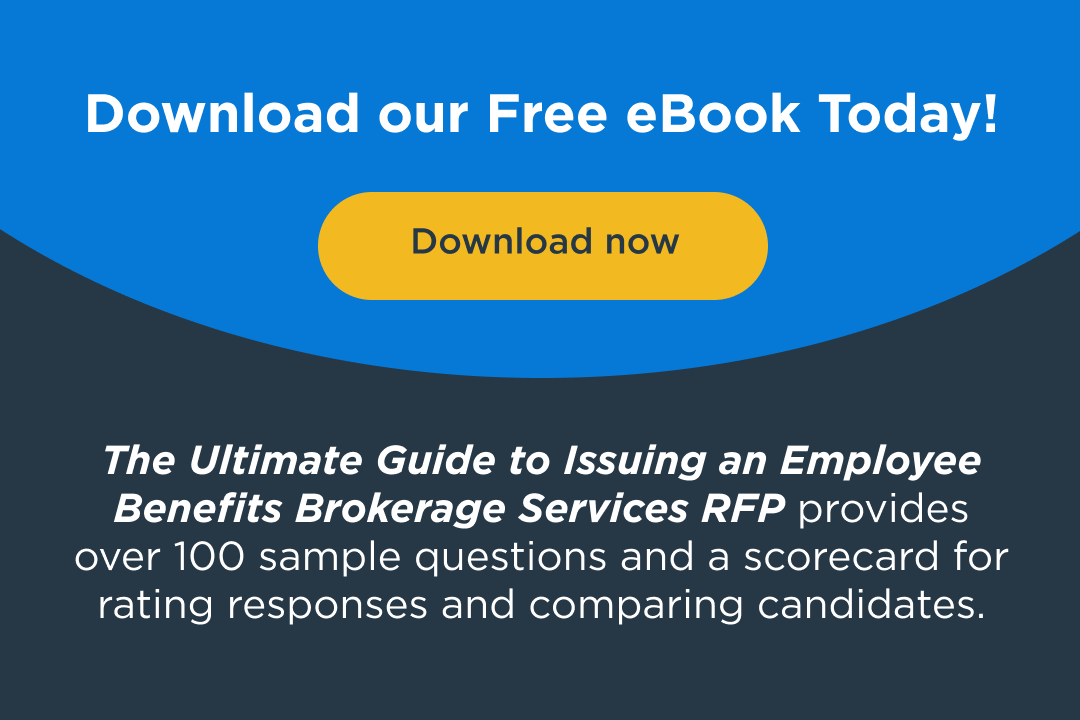What’s a Professional Employee Organization: A Guide for HR and Finance Professionals
January 31, 2025

As a small or midsize company, a Professional Employer Organization (PEO) can be a game-changer for managing human resources, employee benefits, payroll, and compliance.
PEOs offer an attractive solution to help businesses reduce administrative burdens while providing a comprehensive benefits package for employees. However, as companies grow, there may come a time when they outgrow the PEO model.
If you’re an HR or finance professional at a small to midsize company, recognizing when you’ve outgrown your PEO is essential to avoid inefficiencies, higher costs, or limited flexibility. In this blog, we’ll explore the key signs that suggest your organization may have outgrown its PEO and how transitioning to a different solution, such as bringing HR in-house or partnering with a benefits broker, can lead to more effective people management and cost savings.
What is a PEO: Professional Employer Organization?
A Professional Employer Organization is a third-party provider that assumes many of the responsibilities associated with human resources, payroll, compliance, and employee benefits. PEOs operate under a co-employment model, which means they share certain legal and administrative employer responsibilities with the company.
By pooling the employees of multiple small businesses, PEOs can often provide access to better benefits at a lower cost than what smaller companies could obtain independently. For small businesses with limited HR infrastructure, PEOs can be invaluable, enabling them to offer competitive benefits packages while ensuring compliance with employment laws.
The Advantages of a Professional Employer Organization for Growing Businesses
For small and emerging businesses, using a Professional Employer Organization offers several key advantages:
- Cost Savings on Benefits: PEOs often provide access to health insurance plans and retirement options at rates typically available only to much larger companies.
- Compliance Expertise: PEOs help businesses navigate complex employment laws, reducing the risk of fines and legal challenges.
- HR Administrative Relief: Outsourcing HR functions like payroll processing, employee onboarding, and regulatory compliance enables your internal team to focus on core business activities.
- Enhanced Benefits: PEOs help attract and retain talent by offering a robust benefits package, including health insurance, retirement plans, and other employee perks.
However, while a PEO can be highly effective during the early stages of growth, it’s important to periodically assess whether this model is still serving your organization as it scales. Here are the key signs that it might be time to transition away from a PEO.
Signs Your Company Has Outgrown a Professional Employer Organization
1. Increasing Costs with Limited Flexibility
One of the biggest selling points of a PEO is cost efficiency. But as your company grows, the cost structure of your PEO arrangement may become less advantageous.
Many PEOs charge fees based on the number of employees or as a percentage of payroll, which means that as you hire more employees and salaries increase, so do your fees. At a certain point, you may find that these costs exceed what you’d pay if you handled benefits, payroll, and compliance internally or worked directly with a benefits broker.
Additionally, the PEO model can limit your ability to customize your HR strategy. PEOs generally offer standardized benefit packages, which may no longer meet the specific needs of your growing workforce. If you’re starting to feel constrained by a one-size-fits-all approach, it may be time to consider taking more control over your HR operations.
2. Desire for Greater Control Over HR Functions
As companies grow, so do their HR needs. A one-size-fits-all PEO solution may no longer be sufficient to address the complexities of your workforce. Larger companies often require more flexibility and customization in their HR and benefits programs, such as tailored wellness programs, customized compensation plans, and unique recruitment strategies.
If you find that your company has developed a more sophisticated HR department, and your team is capable of managing internal HR tasks, you may no longer need the broad support a PEO provides. Transitioning away from a PEO could allow your company to implement more customized HR solutions that better align with your long-term business goals and employee needs.
3. In-House Expertise is Growing
When you first started using a PEO, you likely didn’t have the internal resources to handle HR, benefits, and compliance. However, as your company grows, you may have added HR professionals to your team or expanded your finance department to manage payroll and benefits. If you now have the in-house talent to manage HR operations effectively, continuing to rely on a PEO may no longer make financial sense.
Additionally, handling HR in-house can give your company greater agility when responding to new regulations, changes in the workforce, or evolving business needs. This can be particularly valuable if your company is expanding into new regions or industries where compliance requirements vary.
4. Complex Benefits Needs
As your company grows, your employees’ needs will likely diversify. A more complex workforce—whether due to geographic expansion, the introduction of more specialized roles, or a multigenerational employee base—often requires more flexible and customized benefit options.
A PEO’s standard benefit package may no longer provide the range of options your employees expect or need. For example, offering a broader range of healthcare options, more robust retirement savings plans, or expanded wellness initiatives could become essential as your company scales. Handling benefits administration independently allows you to work with a benefits broker to design a package that better meets the needs of your unique workforce.
5. Compliance Becomes More Manageable Internally
Professional Employer Organization are especially valuable for small businesses that lack the expertise to navigate compliance with federal, state, and local employment laws. However, as your company grows and your internal HR and legal teams expand, you may find that you no longer need the compliance support provided by a PEO.
Many growing companies choose to transition compliance management in-house to gain greater control and reduce reliance on a third party. If your company operates in a highly regulated industry or across multiple states, managing compliance internally can provide more flexibility in adapting to changing laws and regulations.
Transitioning Away from a Professional Employer Organization: What’s Next?
Once you recognize that your company has outgrown a Professional Employer Organization, the next step is to transition smoothly to an alternative HR solution. Here are a few options to consider:
- In-House HR and Benefits Management: If your HR team has grown and you have the internal expertise to manage benefits, payroll, and compliance, bringing these functions in-house can offer more flexibility and cost savings.
- Partnering with a Benefits Broker: A benefits broker can help you design and implement a customized benefits package that meets your company’s unique needs. This approach allows you to maintain access to competitive benefits while gaining more control over costs and plan design.
- HR Outsourcing or Consulting: If you’re not ready to handle all HR functions in-house, you might consider outsourcing specific services, such as payroll processing or compliance, to specialized providers. Alternatively, working with an HR consultant can help you design a scalable HR strategy without fully relying on a PEO.
Final Thoughts
Deciding when your company has outgrown its Professional Employer Organization is a critical step in scaling your business. By carefully assessing your company’s evolving HR needs, financial goals, and workforce demands, you can determine whether transitioning away from a PEO is the right move for your organization.
Partnering with a benefits broker or expanding your in-house HR capabilities may provide more cost-effective and flexible solutions as your business grows. Taking the time to evaluate your options will ensure that your company continues to attract and retain top talent while keeping HR operations efficient and compliant.
For more information on transitioning from a PEO or optimizing your employee benefits strategy, contact HUB International today. We’re here to help you navigate the complexities of managing a growing workforce while ensuring your company stays competitive and compliant.


